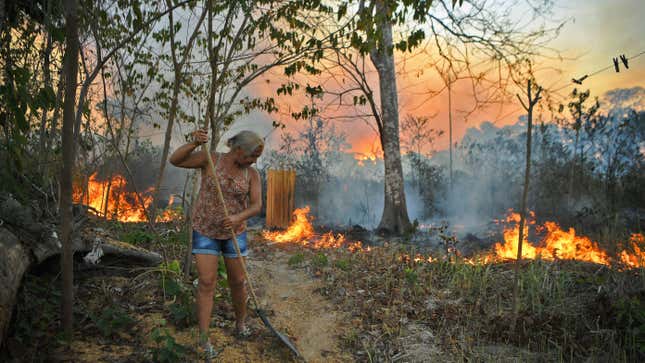
Nearly three-quarters of all people live in nations where the average income is below the global mean and natural resource extraction is outpacing regeneration, new research shows.
The study, published in Nature Sustainability on Monday, comes from the same researchers who measure Earth’s annual Overshoot Day, or the day when people run through the world’s natural resource capacity each year (in 2020, it was August 22). But not all countries use resources at the same pace.
To conduct the analysis, the scientists looked at natural resources, including cropland, fossil fuels, and water. They also factored in land use to account for carbon emissions as well as developing buildings and roads, which compete for biologically productive areas as well.
Thanks to globalization, countries are not only using local resources but also those in other places, so resources in some areas are being depleted more quickly to keep up with international demand. Mathis Wackernagel, founder and president of the Global Footprint Network and lead author of the new study, pointed out that Qatar has “one of the largest footprints in the world” while developing countries have much smaller footprints. On top of that, natural resources like land, water, and minerals aren’t distributed evenly around the world, which means some nations’ resources are extracted much faster.
To examine how this is affecting different countries, the authors obtained data from between 1980 and 2017 from various international bodies—like the United Nations’ Food and Agriculture Organization, the International Energy Agency, and the United Nations’ Comtrade Database on trade statistics—to get a complete picture of how quickly resources in each country around the world are being burned through. They then separated nations based on two factors: their gross domestic product per capita and their ecological deficit (meaning the pace at which each nation consumed biological resources, subtracted from the pace at which local ecosystems can renew them).
They found that in 2017, 72% of the world’s population lived in countries with both an ecological deficit and below-average income. And the global ecological deficit increased to 73%—meaning we used nearly one-and-three-quarters too many resources that year globally.
Things have not always been this bad. In 1980—not so long ago—57% of the world’s population lived in a nation that saw a deficit in biological resources and below world-average income. The global ecological deficit then was only 19%, meaning the world was only using 19% more resources annually than nature could reproduce in the same time span.
Higher-income nations are able to function with much higher local resource deficits because they can simply afford to buy resources from elsewhere. France, Germany, and Japan, for instance, all are in resource deficits, but GDP has remained fairly steady. But the combination of ecological deficit and low wealth can be a deadly one.
“In a low-income country, the availability of regeneration is an even more tight situation. Then, you don’t have the resources available locally, and you don’t have the money to buy them from abroad,” said Wackernagel.
The climate crisis is only making these issues worse by weakening ecosystems less so that they’re less able to regenerate quickly. Forests, for instance, are less capable of regrowing when they’re razed if conditions become too hot or dry to support them.
But it doesn’t have to be this way. The authors outline a number of solutions that could help lessen the load of overconsumption of resources, including boosting conservation, making urban development more environmentally sustainable, and switching over to regenerative agriculture and renewable power sources. These measures should be combined with moves to limit resource depletion in already-depleted areas and to decrease economic inequality, which could include policies like international debt forgiveness, mandatory aid to poor nations from rich ones, and more just and sustainable trade policy.
“We build the future with every dollar we spend. Is the next dollar we spend increasing human wellbeing, while also reducing our resource dependence or increasing our resource security? If not, the country, city, [or] region will become more resource fragile,” said Wackernagel.